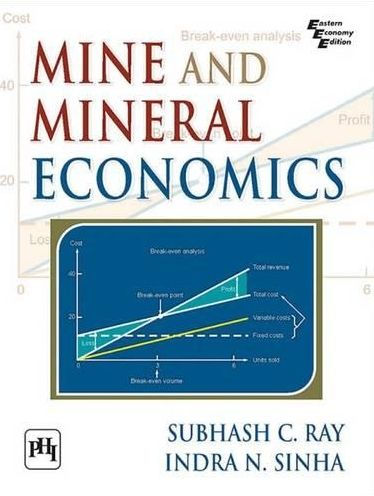Mine and Mineral Economics
For any country's economy, mineral resources form an important part in generating revenue and increasing its GDP. Therefore, learning the economics behind mines and minerals becomes mandatory and logical. This book investigates and promotes understanding of economic and policy issues, programmes and strategies for exploration, mining, beneficiation and marketing activities. Divided into ten chapters, the book puts emphasis on elaborating the principles of mine and mineral economics. The introductory chapter discusses the scope of the subject and the issues addressed by it. Outline of reserve-resource dynamics and the recent approaches towards estimating ore-reserves are then elaborated, followed by a discussion on mineral availability. Focus is then shifted to more technical and quantitative aspects of mineral sampling. Issues relating to mineral property evaluation and project feasibility assessment are then taken up. Both quantitative and logical aspects of mine finance and accounting have been discussed. Nitty-gritties of mine taxation are further outlined and the reader is introduced to aspects relating to marketing and trading of minerals. Distinctive features of the mineral policies of a few countries are highlighted while discussing the characteristic features of a national mineral policy. The last chapter of this book is on mineral industry and the environment. The book is designed for the undergraduate students of mining engineering. The book may be helpful for the postgraduate students of earth science as well.KEY FEATURESBook is supported with numerous illustrations, for better understanding of the text.Numerical and logical-type questions are included in every chapter.
1124140585
Mine and Mineral Economics
For any country's economy, mineral resources form an important part in generating revenue and increasing its GDP. Therefore, learning the economics behind mines and minerals becomes mandatory and logical. This book investigates and promotes understanding of economic and policy issues, programmes and strategies for exploration, mining, beneficiation and marketing activities. Divided into ten chapters, the book puts emphasis on elaborating the principles of mine and mineral economics. The introductory chapter discusses the scope of the subject and the issues addressed by it. Outline of reserve-resource dynamics and the recent approaches towards estimating ore-reserves are then elaborated, followed by a discussion on mineral availability. Focus is then shifted to more technical and quantitative aspects of mineral sampling. Issues relating to mineral property evaluation and project feasibility assessment are then taken up. Both quantitative and logical aspects of mine finance and accounting have been discussed. Nitty-gritties of mine taxation are further outlined and the reader is introduced to aspects relating to marketing and trading of minerals. Distinctive features of the mineral policies of a few countries are highlighted while discussing the characteristic features of a national mineral policy. The last chapter of this book is on mineral industry and the environment. The book is designed for the undergraduate students of mining engineering. The book may be helpful for the postgraduate students of earth science as well.KEY FEATURESBook is supported with numerous illustrations, for better understanding of the text.Numerical and logical-type questions are included in every chapter.
4.92
In Stock
5
1

Mine and Mineral Economics

Mine and Mineral Economics
4.92
In Stock

Product Details
| ISBN-13: | 9788120351745 |
|---|---|
| Publisher: | PHI Learning |
| Publication date: | 01/02/2016 |
| Sold by: | Barnes & Noble |
| Format: | eBook |
| File size: | 2 MB |
About the Author
From the B&N Reads Blog
